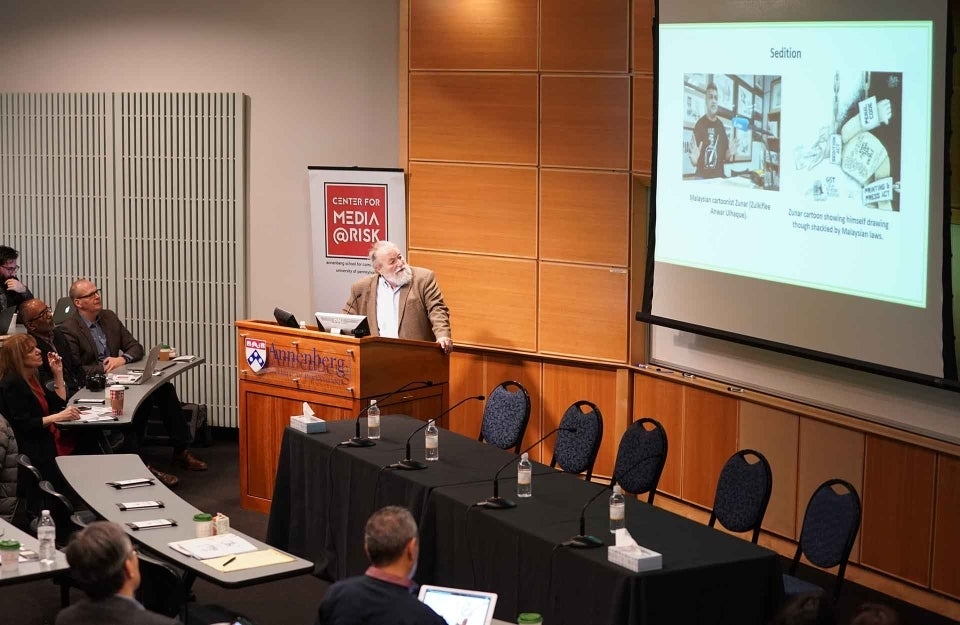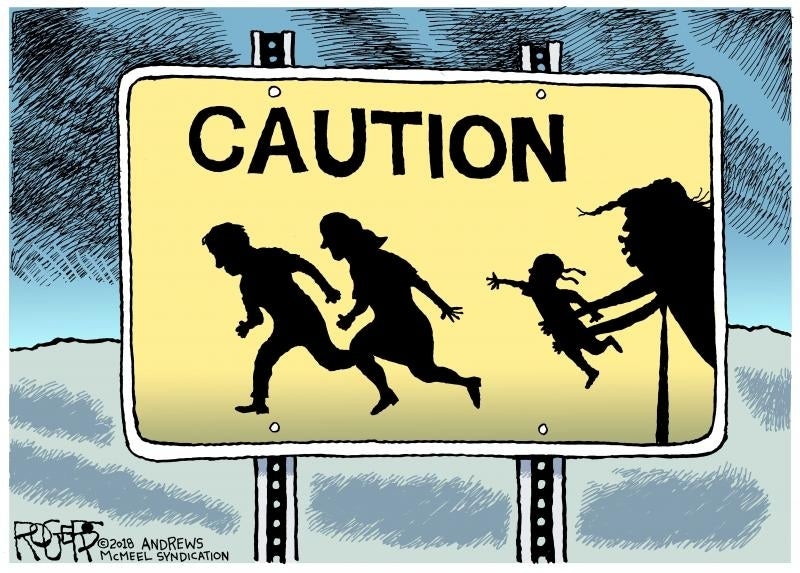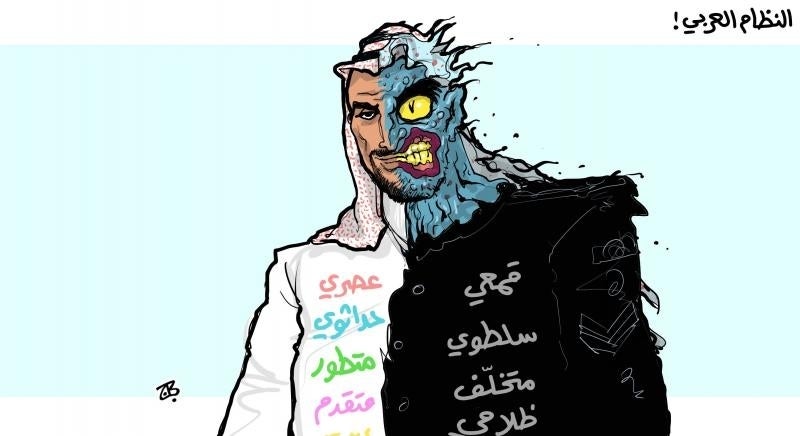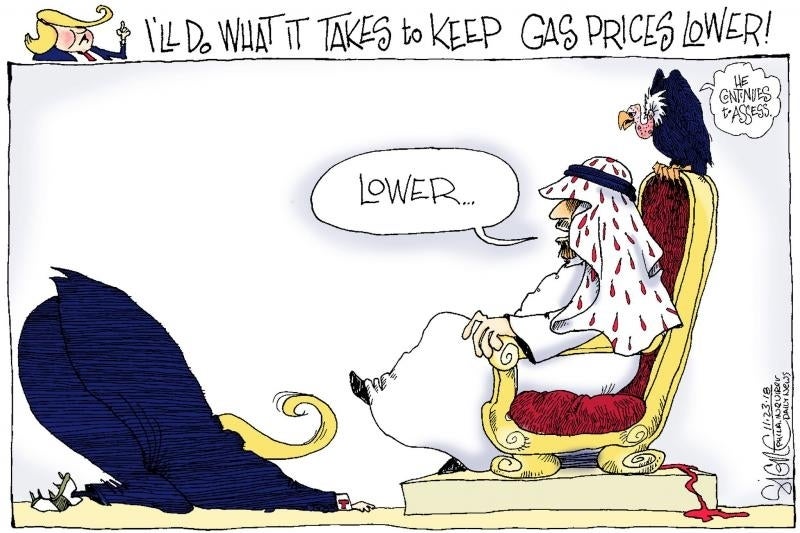Symposium Spotlights Political Cartoonists at Risk
Eight cartooning experts discussed the importance of cartooning and the fight to keep the medium alive.

Even among newspaper journalists, whose numbers declined 45% between 2008 and 2017, political cartoonists are an endangered species. Fewer than 40 staff editorial cartoonists remain in America, down from about 2,000 in 1900. Like all journalists, cartoonists have suffered from two decades of budget cuts to the American newsroom. But as purveyors satire whose irreverence glints the knife blade of truth to power — government, church, civic, and otherwise — their success only increases the incentive for the powerful to push for their elimination.
“It’s not a dying profession,” said cartoonist Ted Rall in a 2017 documentary. “It’s a profession that is being systematically murdered.”
Rall was one of the eight cartoonists and cartooning experts who convened at the Annenberg School last week for the symposium “Red Lines: Cartooning at Risk.” The symposium was organized by the Center for Media at Risk and directed by visiting scholar Cherian George, Professor of Media Studies at Hong Kong Baptist University and hosted by Barbie Zelizer, Director of the Center.
Visiting from as far away as Jordan and Ecuador, the cartoonists painted a picture of their lives that combined the fervent love of cartooning with sobering stories of how they are fighting to keep doing it.
Cartoonist Rob Rogers was fired from his job at the Pittsburgh Post-Gazette earlier this year for drawing cartoons critical of President Trump.

Dwayne “Mr. Fish” Booth, a lecturer at the Annenberg School who has lost editorial gigs for refusing to go easy on powerful figures, has received enough death threats that he has a standard procedure on how to handle them. Rall was fired from the Los Angeles Times for publishing a description of being detained by the Los Angeles Police Department — because, he says, the LAPD Pension Fund is the largest shareholder in the newspaper. They are currently locked in a bitter lawsuit, with potentially disastrous financial stakes for Rall if he loses.
At the day-long symposium on December 7, Emad Hajjaj, one of the most influential cartoonists in the Arab world, displayed some of his most controversial cartoons, some of which have never been published for that reason.

In one, the emblem of Saudi Arabia, two crossed swords and a palm tree, was depicted as two saws and a dismembered arm holding a pen, with “#khashoggi” written at the top.
Many people will respond negatively to his work, but Hajjaj shrugs. “It’s my right as a cartoonist to use things we see and practice in our world,” he says.
“Humor is a simple tool to see reality in another way, so there should be no limits,” concurred Vilma Vargas, an Ecuadorian cartoonist whose 2016 exhibition was censored for being “too political” and who has been without an official newspaper staff role since 2014. “A drawing can never be more offensive than reality itself.”

John Lent, Editor-in-Chief of the International Journal of Comic Art and a longtime scholar of cartooning, gave an overview of the intimidation faced by Asian and African cartoonists.
He spoke of many of the disastrous consequences for cartoonists facing down political forces. Sued for libel or sedition by their governments, fired from their publications, or cited as the reason for suspending a publication, many cartoonists have found their lives destroyed for their profession. After one cartoonist’s home office was ransacked, he lived at the office for years while his family moved to another location. A cartoonist in Iran was imprisoned for 12 years for a cartoon that depicted political figures as different animals.
The other non-cartoonist speaker was Charles Brownstein, Executive Director of the Comic Book Legal Defense Fund. Censorship is about control, he said, whether it’s about a regime controlling its citizens, individuals wanting to control a community, or parents wanting to exert control over children.
“With our political environment in disarray and creeping authoritarianism ever present, it is surprising how little we tend to talk about political cartoons and their creators,” said Professor Barbie Zelizer as she introduced the day. The symposium closely echoed one of the missions of the Center, which is to bring together academics and practitioners to solve critical challenges to the media.
The conference was the brainchild of Cherian George, who before his academic career served as the arts and photo editor of the Straits Times in Singapore and managed a team of 40, including illustrators and cartoonists.
“Singapore is crazy rich in some ways,” said George, “but political freedom is not one of them.”
While his staff of cartoonists understood that they could caricature leaders of other countries, Singapore’s leaders were strictly off limits, even when depicted in coded ways. These “red lines” that were not to be crossed gave the symposium its name.
“Red lines were invisible — unspoken,” said George. “They didn’t test them. Mischievous cartoons were killed in our imaginations.”

The cartoonists agreed that they do have red lines in their own minds — for example, Philadelphia Inquirer cartoonist Signe Wilkinson won’t include nudity, bathroom humor, or vulgar language (“it’s a family newspaper”), and she’s fine with that — but too often the red lines are externally imposed. At the Post-Gazette, Rogers was accustomed to having one or two cartoons a year killed by his editor, usually for criticizing the Catholic Church. When a new editor killed 18 cartoons in a matter of months, nearly all for criticizing Trump or Trump policies, it was clear the winds had shifted.
Despite all the obstacles facing the cartoonists, they all continue to pursue their work. Rogers’ new book, Enemy of the People, tells the story — in cartoon form — of his last weeks at the Post-Gazette and where he’s going next. But there’s no doubt, he will continue cartooning.
“It’s not an intellectual choice to cartoon,” says Booth. “It’s my heart. It’s a personal commitment to tell the truth.” He pauses and smiles. “Or to try to upset people.”




